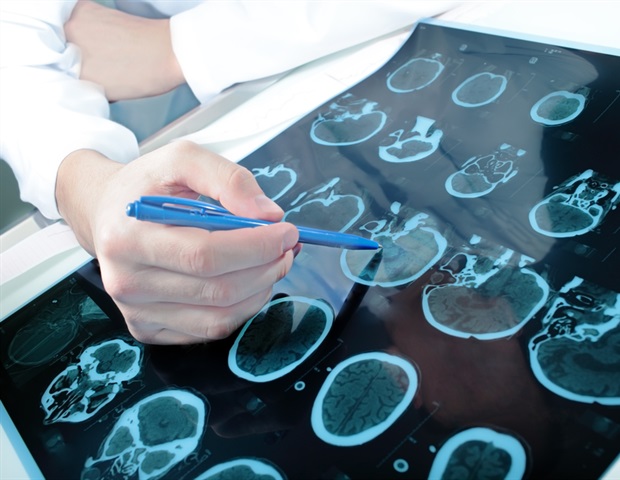The Cullen Education and Research Fund (CERF) announced the recipients of the first CERF Medical Engineering Prize for ALS Research: Dr. Leigh Hochberg, Dr. Conor Walsh, and Dr. Sabrina Paganoni. Their "BrainGate+SoftRobotics" team from Brown University, Harvard University and Massachusetts General Hospital (MGH) is creating a series of technologies intended to improve arm and hand function for people with muscle weakness and paralysis, including people with amyotrophic lateral sclerosis (ALS).
The CERF Medical Engineering Prize is accompanied by 500,000 euros, which the researchers have designated for distribution to their institutions to support their collaborative research.
ALS, also known as Motor Neuron Disease (MND) or Lou Gehrig's Disease, leads to the injury and loss of neurons in the brain and spinal cord, leading to paralysis. The CERF Medical Engineering Prize was established to recognize outstanding research and to encourage the development of technologies that maintain or restore function of the arm and hand for people with ALS/MND.
We are delighted to announce the BrainGate+SoftRobotics team as the winner of this year's CERF Engineering Prize. This important and groundbreaking work will change the lives of those living with ALS by giving them back some of the independence that is taken away by this awful disease."
Hazel Cullen, manager of the CERF prize
The winning team is working together to create wearable soft robotics that maintain the function of the arm and hand, and can be controlled entirely by a person's intention to move. The soft robotic system, already in development, can detect subtle movements – for example, the partial flexion of an index finger – and pneumatically actuate a glove that quietly and smoothly completes the closing of the hand to grasp a coffee cup. The research team is working to combine the soft robotic technology with the investigational BrainGate system, a tiny array of electrodes that can sense and decode signals from the brain's motor cortex. The team aims to use signals from the brain to drive the soft robotics, restoring people's ability to reach and grasp.
"Soft robotics can quietly, smoothly and unobtrusively provide for either rehabilitation or restorative function for people with ALS, stroke or spinal cord injury," said Walsh, the Paul A. Maeder Professor of Engineering and Applied Sciences at the Harvard John A. Paulson School of Engineering and Applied Sciences. "Watching and listening to end users evaluate our soft robotic systems is incredibly inspiring. Their ideas and feedback continue to push the technology further and faster with an unyielding focus on developing portable systems that restore highest priority functions for people with tetraplegia. Our work with the BrainGate team is leading to a palette of coordinated technologies that will provide the right amount of assistance at the right moment for people with ALS."
Walsh is also an associate faculty member at the Wyss Institute for Biologically Inspired Engineering and an Adjunct Associate Professor in the Department of Physical Therapy & Athletic Training at Boston University. He is the is the founder of the Harvard Biodesign Lab, which brings together researchers from the engineering, industrial design, apparel, biomechanics, physical therapy and business communities to develop and translate new disruptive robotic technologies for augmenting and restoring human performance.
"On behalf of our BrainGate team, I'm so grateful to the Cullen Family for their visionary and engaged support of research ton help people with ALS," said Hochberg. "Brain-computer interfaces, including the system being developed by our BrainGate consortium, hold tremendous potential to restore communication and mobility for people with paralysis. Together with Conor and his incredible lab, we are working every day to, quite literally, turn thought into action."
Hochberg is a critical care and vascular neurologist and Director of the MGH Center for Neurotechnology and Neurorecovery; Professor of Engineering in the School of Engineering and Carney Institute for Brain Science at Brown University; Director of the Dept. of Veterans Affairs Rehabilitation Research and Development Center for Neurorestoration and Neurotechnology in Providence, RI; and Senior Lecturer on Neurology at Harvard Medical School. He also directs the BrainGate clinical trials, conducted by a team of clinical and basic neuroscience and neuroengineering researchers from across the nation.
"Many of us in the ALS community are working to develop therapies that will slow down, stop, or even reverse the loss of neurons. As new medications are developed that prolong life, it is imperative to also develop tools that can improve patient's independence," said Paganoni. "Seeing people with tetraplegia type on a computer screen or move a limb, simply by thinking about those movements, is remarkable. These are critical steps on the path to truly restored function for people with ALS. We are grateful to all people living with paralysis who choose to participate in these ongoing clinical trials: it's only through their generous efforts that we can discover and develop such revolutionary technologies."
Paganoni is physician-scientist at the Healey & AMG Center for ALS in the Department of Neurology at Massachusetts General Hospital, Co-Director of the MGH Neurological Clinical Research Institute, and Assistant Professor of Physical Medicine and Rehabilitation at Spaulding Rehabilitation Hospital/Harvard Medical School focuses on clinical trials and therapy development for ALS.
Brown University
Posted in: Medical Science News | Medical Condition News
Tags: Amyotrophic Lateral Sclerosis, Brain, Coffee, Cortex, Critical Care, Education, Hospital, Lou Gehrig's Disease, Medical School, Medicine, Motor Neuron Disease, Muscle, Neurology, Neuron, Neurons, Neuroscience, Paralysis, Physical Therapy, Research, Sclerosis, Spinal Cord Injury, Stroke, Vascular, Veterans Affairs
Source: Read Full Article
